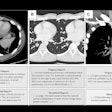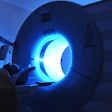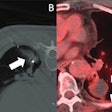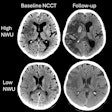Only one in five eligible U.S. adults underwent lung cancer screening in 2024, according to a report released by the American Cancer Society (ACS) and published November 19 in JAMA.
The finding is of concern, said lead author Priti Bandi, MD, in a statement released by the society. Bandi is the scientific director of cancer risk factors and screening surveillance research for the ACS.
"It's disappointing that lung cancer screening uptake remains this low," she said. "More sobering is that this low uptake is translating into a real missed opportunity, as three times more lung cancer deaths could be prevented (or lives saved) if everyone eligible were screened."
In the U.S., lung cancer is the second most common cancer and the leading cause of cancer death. This year, 225,000 new cases have been diagnosed and 125,000 deaths from the disease have been recorded. The U.S. Preventive Services Task Force (USPSTF)'s current recommendation is that adults between the ages of 50 and 80 who have a 20 pack-year smoking history and currently smoke or have quit within the past 15 years should undergo annual screening for lung cancer with low-dose CT (LDCT).
Bandi's group investigated LCS uptake using data from the 2024 National Health Interview Survey. It reported the following:
- 12.8 million individuals were eligible for lung cancer screening according to the USPSTF eligibility criteria in 2024.
- Of these, 55% were male, 66.4% were aged 60 or older, and 82.4% were white.
- Only 18.7% of eligible individuals reported being up to date with lung cancer screening.
The team also noted that, if screening increased to 100%, an estimated 62,110 lung cancer deaths over five years would be prevented and 872,270 life-years would be gained. In contrast, at current screening levels, only a quarter of these estimated gains are being achieved, with 14,970 deaths prevented and 190,030 life-years gained.
Finally, the researchers wrote that if those currently ineligible for screening according to the USPSTF criteria had 100% lung cancer screening compliance (this would include 28.1 million ever-smoking individuals between the ages of 50 and 60), an estimated 29,690 additional deaths would be avoided and 482,410 additional life-years gained. (Roughly 30% of this benefit would manifest in those with 15 years or more since quitting and 20 or more pack-years, according to Bandi and colleagues.)
"We need to raise these screening numbers," Bandi urged. "[Expanding] current screening eligibility irrespective of years since quitting is warranted and could help save lives."
Read the full report here.





















